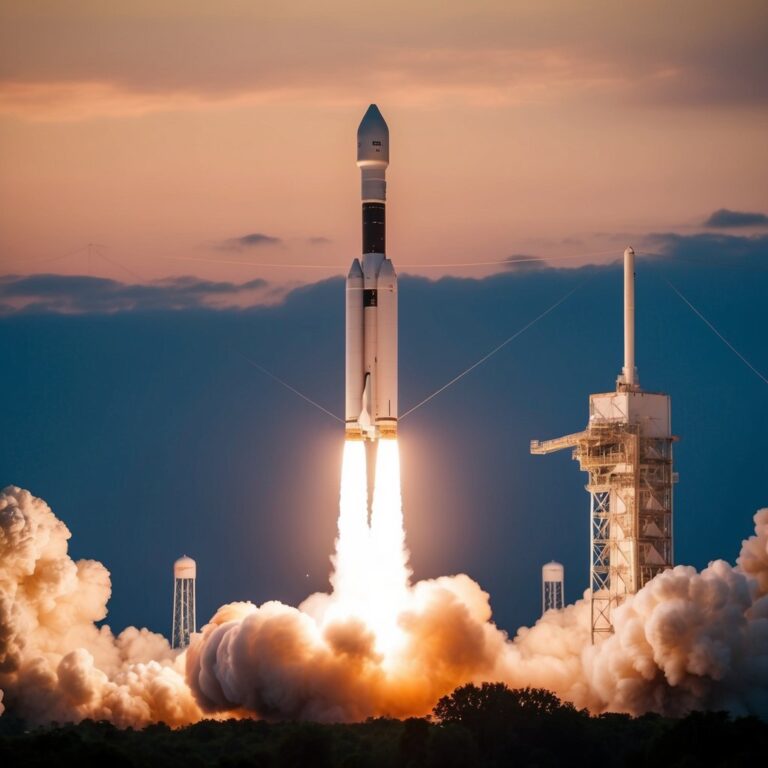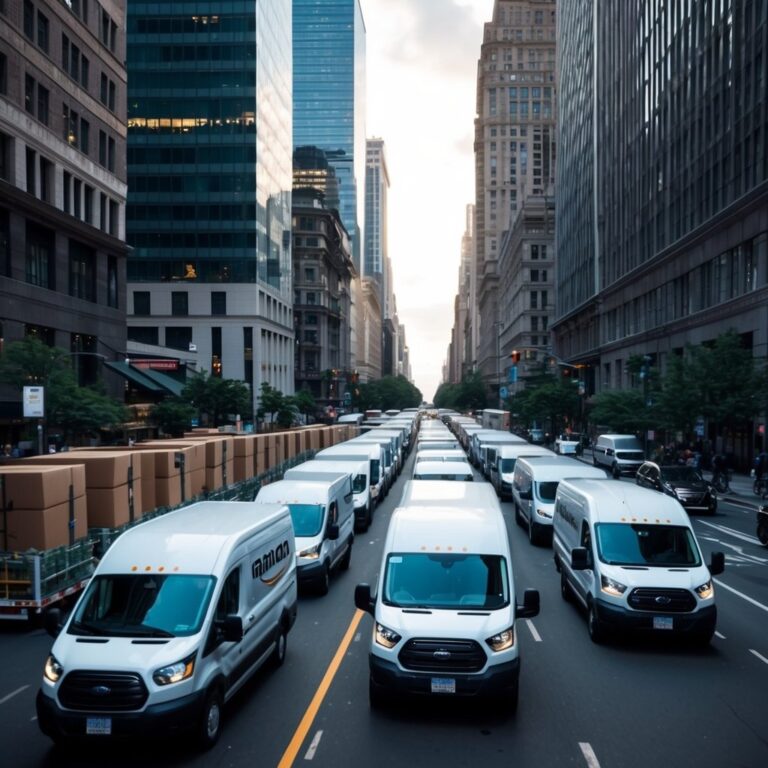Amazon Warehouse Automation: Enhancing Efficiency and Productivity in Supply Chain Management
Amazon has transformed the way products are stored and shipped through its innovative amazon warehouse automation. The integration of robots and artificial intelligence allows Amazon to process orders more efficiently and improve delivery times. With automated systems handling tasks like picking, packing, and transportation of goods, Amazon can meet the growing demands of its customers.

As automation technology continues to evolve, it plays a crucial role in optimizing operations. Robots such as Sequoia and Digit are not only enhancing the speed of order fulfillment but also increasing safety in the workplace. These advancements contribute to Amazon’s commitment to delivering items faster while ensuring a smooth workflow in their fulfillment centers.
Understanding how Amazon’s warehouse automation works can shed light on the future of retail logistics. Readers will discover the impact of this technology on productivity and customer satisfaction, making it an eye-opening topic for anyone interested in the retail and logistics sectors.
Evolution of Automation in Amazon Warehouses

Automation in Amazon warehouses has progressed significantly over the years. This evolution has transformed the company’s logistics and fulfillment capabilities, enhancing efficiency and speed.
History and Development
Amazon began its journey in automation in the early 2000s. The company quickly recognized the potential benefits of streamlining operations through technology. In 2012, Amazon acquired Kiva Systems, a robotics company, marking a turning point in warehouse automation. Kiva robots are designed to move products around the warehouse, which reduces the time employees spend walking.
By 2014, Amazon had over 15,000 Kiva robots in its warehouses. This innovation allowed Amazon to handle a larger volume of orders while maintaining accuracy. The integration of robotics also improved safety by minimizing heavy lifting and reducing physical strain on workers.
Advancements in Robotics
In recent years, Amazon has further advanced its automation efforts. The company has introduced new types of robots that can perform a variety of tasks. For example, robots now assist with sorting packages, which speeds up the delivery process.
Additionally, Amazon has partnered with robotics firms like Covariant to integrate artificial intelligence into its systems. This collaboration aims to enhance the robots’ abilities to handle complex tasks and adapt to changing environments.
These advancements are pivotal in making operations more efficient. They allow Amazon to offer services like one-day delivery, positioning the company as a leader in the e-commerce market.
Automation Technologies in Use

Amazon uses a variety of automation technologies to enhance efficiency and speed in its warehouses. These technologies include advanced robotic systems, seamless integration of workflows, and sophisticated inventory management software. Each plays a crucial role in streamlining operations, ensuring quick order fulfillment and optimal inventory control.
Robot Types and Functions
Amazon employs multiple types of robots within its warehouses. These include mobile robots, robotic arms, and conveyor systems.
- Mobile Robots: These units transport products throughout the warehouse, picking them up and delivering them to packing stations. They can navigate independently and map their surroundings.
- Robotic Arms: Used for tasks such as sorting and packing items, robotic arms are designed to handle packages of various sizes and weights. They work with high precision to reduce handling time.
- Automated Guided Vehicles (AGVs): These vehicles transport items across the facility, often working alongside workers to speed up tasks. They are programmed to follow specific paths and can adjust their routes based on real-time conditions.
By utilizing these robotic systems, Amazon can significantly reduce the time it takes to process orders.
System Integration and Workflow
Amazon’s automation technologies integrate seamlessly to create smooth workflows. This system integration is essential for maximizing efficiency across operations.
- Interconnected Systems: Automation systems communicate in real time, updating inventory levels and production statuses instantly. This helps in maintaining accurate data throughout the supply chain.
- Streamlined Processes: Warehouse layouts are designed to support automated paths for robots, minimizing travel time. The integration of various systems allows for optimized picking routes, reducing bottlenecks.
- Real-Time Monitoring: Managers can monitor workflows through dashboards that track robotic movement, inventory levels, and order fulfillment rates. This data empowers quick decision-making.
The result is a fluid operation where delays are minimized, ensuring faster delivery to customers.
Inventory Management Software
Amazon’s inventory management software is critical for effective warehouse operations. This software handles the tracking and control of products in real time.
- Stock Level Tracking: The system automatically updates stock levels as items are picked or added. This minimizes the risk of stockouts or overstocking.
- Predictive Analytics: By analyzing past purchase patterns, the software can forecast future inventory needs. This helps in maintaining optimal levels of stock based on demand.
- User-Friendly Interface: Employees can easily navigate the software, making it simple to locate items and manage stock efficiently.
This advanced software solution ensures that Amazon can meet customer demands while effectively managing its extensive inventory.
Impact of Automation

Warehouse automation significantly transforms the logistics landscape, enhancing operational efficiency and changing workforce dynamics. It also improves safety in the workplace, addressing many physical challenges faced by employees.
Operational Efficiency
Automation in Amazon warehouses leads to remarkable improvements in operational efficiency. Automated systems, including robots and conveyor belts, handle tasks faster than human workers. These systems can sort, package, and transport goods with precision.
For example, robots can move heavy items, reducing the time needed for order fulfillment. This increases the speed at which customers receive their products. Additionally, automation reduces errors in order processing, leading to fewer returns and higher customer satisfaction.
Key benefits include:
- Faster processing times: Orders are filled more quickly.
- Higher accuracy rates: Less chance of human error.
- Increased throughput: More items processed in less time.
These factors contribute to a leaner supply chain.
Workforce Changes
The introduction of automation changes the workforce landscape. While it can streamline operations, it also means some jobs are at risk. Many positions that involve repetitive tasks may diminish as robots take over those duties.
However, new roles are created in areas like maintenance and programming. Workers need to adapt by obtaining new skills to stay relevant in the evolving job market. Companies often provide training programs to help employees transition to these new roles.
For example, Amazon invests in upskilling employees so they can work with advanced technologies. This shift not only helps retain talent but also builds a more skilled workforce.
Safety Improvements
Automation leads to significant safety improvements in warehouses. Robots are used to carry heavy loads and perform tasks that can cause injuries to human workers. By taking on physically demanding jobs, robots mitigate risks associated with lifting and repetitive strain.
This reduction in hazardous activities lowers the frequency of workplace injuries. Ergonomic considerations improve as tasks become more efficient, positively affecting worker health.
By implementing automation, companies aim for:
- Fewer workplace injuries: Robots handle the heavy lifting.
- Better work conditions: Employees can focus on less strenuous tasks.
- Improved morale: A safer work environment boosts employee satisfaction.
These enhancements foster a healthier and more productive workplace.
Challenges and Considerations

Amazon’s warehouse automation introduces various challenges that require careful consideration. These challenges can significantly impact the efficiency and effectiveness of operations. Important areas to focus on are technological limitations, economic factors, and future prospects.
Technological Limitations
One of the primary challenges in warehouse automation is the technological limitations of current robots and systems. While robots excel at repetitive tasks, they struggle with complex scenarios. For example, picking items from varying piles or navigating through crowded spaces poses difficulties.
Robotic systems require constant upgrades to keep pace with demand. This can lead to significant downtime for installations and maintenance. Furthermore, integrating new technologies with existing infrastructure can create complications. Companies must also train employees to manage and maintain these systems effectively.
Economic Factors
Economic factors play a crucial role in shaping warehouse automation strategies. Initially, the investment in automation may seem high. Companies need to consider the cost of robots, software, and ongoing maintenance. Yet, the long-term savings on labor and increased efficiency can offset these costs.
Additionally, fluctuating demand in e-commerce can impact economic stability. During peak seasons, automated systems may face overwhelming workloads, leading to wear and tear. Companies need to balance these factors by developing scalable solutions that allow for flexibility.
Future Prospects
The future prospects of Amazon warehouse automation are vast, yet uncertain. As technology advances, the capabilities of robots will increase. Innovations like artificial intelligence and machine learning can enhance decision-making.
However, it is essential to consider the human element in automation. Workers may face increasing pressure from automated systems. Balancing automation with a skilled workforce will be critical. Companies must focus on how to utilize technology effectively while ensuring employee well-being.
In summary, these challenges must be carefully navigated to ensure successful implementation of warehouse automation strategies.
Conclusion

Amazon’s warehouse automation plays a key role in its operational success. It leverages technology to enhance efficiency and meet customer demand.
Benefits of Automation:
- Increased Speed: Automation speeds up the order fulfillment process.
- Reduced Costs: It lowers labor costs by minimizing reliance on manual work.
- Improved Accuracy: Automated systems help reduce errors in order processing.
Despite these advantages, there are concerns about workers’ conditions in automated environments. Studies show that automation can lead to increased workloads and stress for employees.
Key Takeaways:
- Automation positively impacts Amazon’s logistics.
- It is essential to address the human aspect to maintain a balanced workforce.
- Continuous improvement in technology is likely to shape the future of warehouse operations.
Automation is critical for Amazon, but the company must navigate the balance between efficiency and employee well-being. The journey of warehouse automation will continue to evolve as technology advances and industries adapt.






